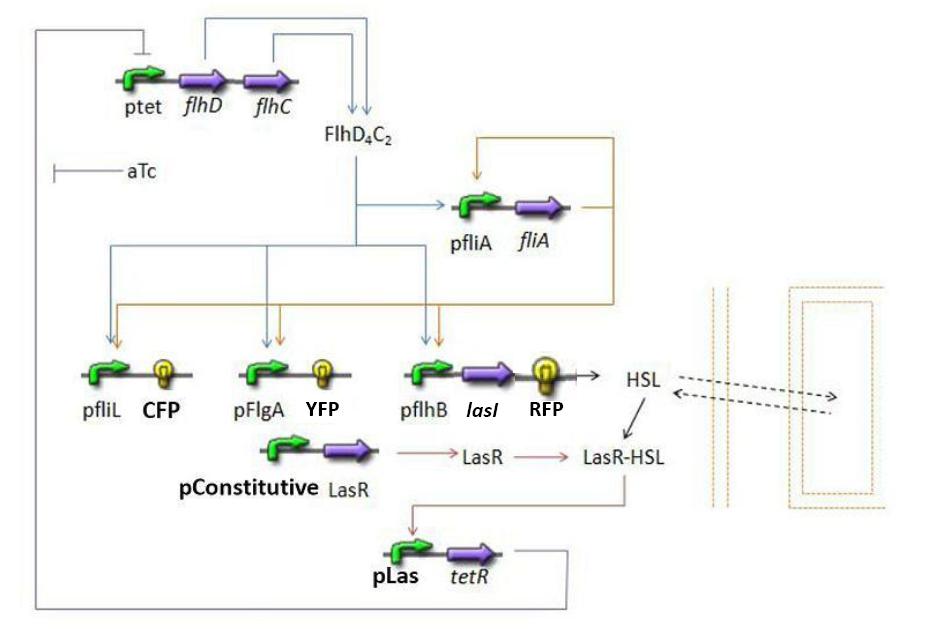Team:Paris/Modeling/BOB
From 2008.igem.org
(→Establishing the model) |
(→Population evolution) |
||
| Line 41: | Line 41: | ||
Then, we need to add the death term, and a dilution term cause by the renewal of the chemostat. Finally we get : | Then, we need to add the death term, and a dilution term cause by the renewal of the chemostat. Finally we get : | ||
[[Image:population_evolution_full.jpg|center]] | [[Image:population_evolution_full.jpg|center]] | ||
| + | Where c<sub>max</sub> is the carrying capacity for cell growth, and D the dilution rate, d the death rate constant | ||
== FIFO temporal order Module == | == FIFO temporal order Module == | ||
Revision as of 16:23, 27 August 2008
Introduction
BibliographyMuch of our inspiration comes from four articles to which we shall refer in the next subsections :
Summary of the steps modeledHere is a quick summary of the step we decided to interpret mathematically...
Establishing the modelPopulation evolutionFirst of all, it seems important at this stage to present the way we interpret the evolution of the population in the chemostat. We want to impose to our model the fact that the rate of production has to be proportional to the existing population and to the amount of available resources. Hence a logistic model of the population, where c denotes the concentration of cells in the medium: Then, we need to add the death term, and a dilution term cause by the renewal of the chemostat. Finally we get : Where cmax is the carrying capacity for cell growth, and D the dilution rate, d the death rate constant FIFO temporal order Module(lien partie model) Steps involvedMathematical modelDiscussionNormalizationWhich gene goes were?Simulations and ResultsSynchronization Module : las System(lien partie model) Steps involvedMathematical ModelDynamics of HSLDynamics of HSLextTetR=f(HSL)FlhDC=f(TetR)Simulations and resultsParameters summaryTesting the oscillationsTesting the FIFOTesting the Synchronization |
 "
"

